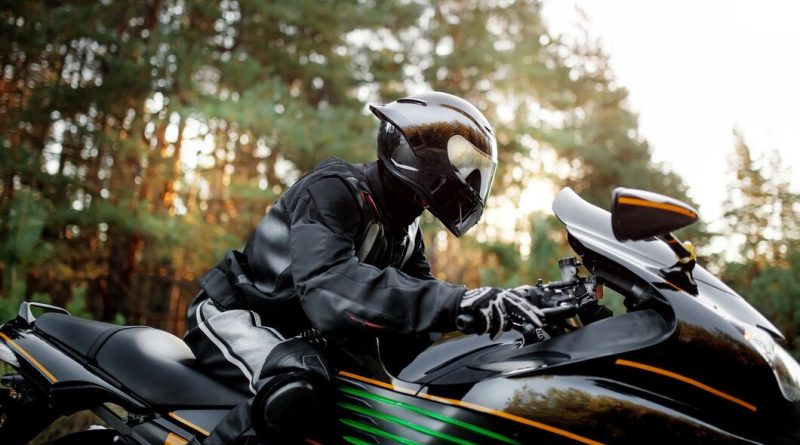Motorcycle Helmets: Enhancing Safety and Style
Motorcycle helmets types
When it comes to motorcycle helmets, there is a diverse range of options available to suit different riding styles, preferences, and safety requirements. Whether you prioritize maximum protection, versatility, style, or connectivity, there is a helmet type designed to meet your needs.
Full-Face Helmets
Full-face helmets are the most common and widely recognized type of motorcycle helmet. They provide complete coverage to the rider’s head, including the chin and face. Designed to offer optimal protection, full-face helmets feature a sturdy outer shell, impact-absorbing liner, and a visor for eye protection. These helmets excel in shielding riders from wind, debris, and impacts, making them a popular choice for sportbike riders, long-distance tourers, and riders seeking maximum safety.
Modular Helmets
Modular helmets, often referred to as flip-up or convertible helmets, combine the advantages of full-face and open-face designs. They feature a hinged chin bar that can be easily flipped up, converting the helmet into an open-face configuration. This flexibility allows riders to enjoy the convenience of an open-face helmet while still having the option to quickly convert to full-face protection when needed. Modular helmets are favored by riders who value versatility and the ability to communicate easily without removing the helmet.
Open-Face Helmets
Open-face helmets, also known as three-quarter helmets, cover the top, sides, and back of the head but leave the face exposed. They typically feature a visor or a pair of goggles to protect the rider’s eyes. Open-face helmets provide a greater sense of freedom and visibility while still offering substantial protection. They are popular among cruiser riders, scooter riders, and those who prefer a more classic or retro look.
Half Helmets
Half helmets, also called brain buckets or skull caps, cover only the top of the head and provide minimal protection. They are characterized by their lightweight design and compact size. While half helmets offer the least coverage among helmet types, they are popular among riders who prioritize freedom, minimalism, and maximum airflow. However, it is important to note that they offer limited protection and may not be legal in some jurisdictions.
Off-Road Helmets
Off-road helmets, commonly known as motocross or dirt bike helmets, are specifically designed for off-road riding and extreme sports. They feature an elongated chin bar, an angular design, and a large visor to accommodate goggles for eye protection. Off-road helmets excel in providing ample ventilation, superior impact resistance, and the ability to withstand the rigors of dirt, mud, and debris encountered in off-road environments.
Adventure Helmets
 Adventure helmets are designed for riders who embark on long-distance journeys, adventure riding, or dual-sport expeditions. Combining the features of off-road and full-face helmets, adventure helmets offer a versatile solution for both on-road and off-road riding. They typically feature a peak or sun visor, a large face shield, excellent ventilation, and the option to wear goggles. Adventure helmets prioritize comfort, visibility, and protection in various terrains and weather conditions.
Adventure helmets are designed for riders who embark on long-distance journeys, adventure riding, or dual-sport expeditions. Combining the features of off-road and full-face helmets, adventure helmets offer a versatile solution for both on-road and off-road riding. They typically feature a peak or sun visor, a large face shield, excellent ventilation, and the option to wear goggles. Adventure helmets prioritize comfort, visibility, and protection in various terrains and weather conditions.
Bluetooth-Enabled Helmets
With the increasing demand for connectivity, Bluetooth-enabled helmets have gained popularity. These helmets incorporate built-in Bluetooth technology, allowing riders to connect wirelessly to their smartphones, GPS devices, or intercom systems. Bluetooth helmets enable riders to make phone calls, listen to music, receive navigation prompts, and communicate with fellow riders, enhancing convenience and safety on the road.
Motorcycle helmets safety
It is crucial to choose a helmet that meets safety standards and provides a proper fit. When purchasing a motorcycle helmet, consider the following factors:
- Safety Certifications: Look for helmets that comply with safety standards such as the DOT (Department of Transportation), ECE (Economic Commission for Europe), or Snell (Snell Memorial Foundation) certifications. These certifications ensure that the helmet meets minimum safety requirements.
- Fit and Comfort: A well-fitting helmet is essential for both safety and comfort. Ensure the helmet fits snugly without causing pressure points or being too loose. Different helmet brands and models may have different sizing and shape profiles, so it’s important to try on multiple helmets to find the best fit.
- Ventilation: Proper ventilation helps keep riders cool and comfortable during long rides. Look for helmets with well-placed vents and airflow channels that promote adequate air circulation without compromising safety.
- Visor and Eye Protection: The visor plays a crucial role in protecting the rider’s eyes from wind, dust, and debris. Consider helmets with anti-fog and anti-scratch properties, as well as the option to easily swap visors for different lighting conditions.
- Additional Features: Some helmets offer extra features like removable and washable liners, integrated sun visors, noise reduction technology, or emergency quick-release systems. These features can enhance convenience and overall riding experience.
Remember, motorcycle helmets have a limited lifespan due to wear and tear, as well as the potential degradation of materials over time. It is recommended to replace your helmet after a significant impact or every few years to ensure optimal safety.
Selecting the right motorcycle helmet is a crucial decision for any rider. The wide variety of helmet types available ensures that there is a suitable option for every rider, depending on their preferences, riding style, and safety needs. Prioritize safety, comfort, and compliance with industry standards when choosing a helmet, and remember to replace it when necessary. With the proper helmet, you can enjoy the thrill of riding while minimizing the risks associated with accidents and head injuries. Stay safe and ride responsibly!

